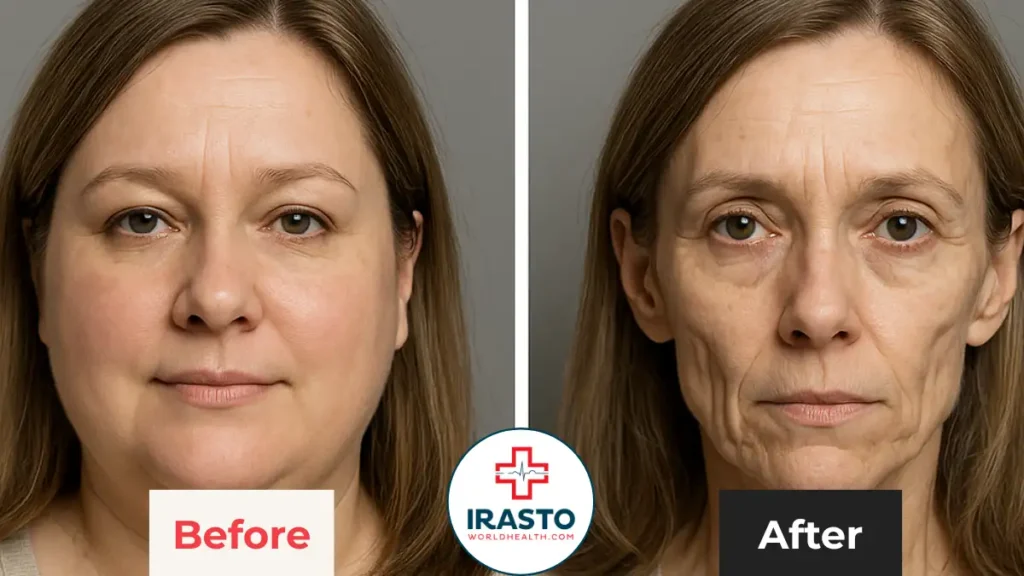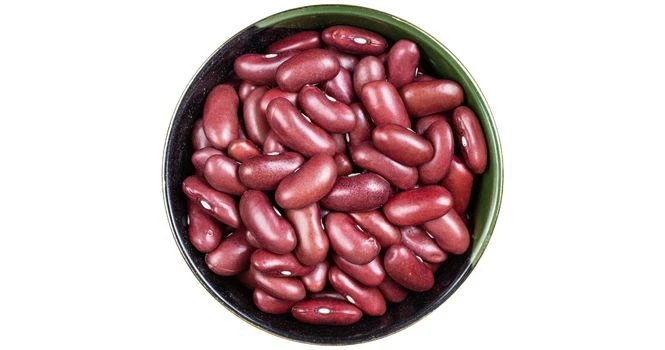What Is ‘Ozempic Face’? Causes, Treatments & Prevention in 2025
Ozempic, an injectable subcutaneous (under the skin) medication started as a treatment for type 2 diabetes—but today, it’s just as well known for helping people lose weight fast. But with fast results come unexpected side effects—like what’s now being called “Ozempic Face.”
Ozempic contains semaglutide, which belongs to a group of drugs called GLP-1 receptor agonists—these mimic a natural hormone that helps lower blood sugar, slow digestion, and reduce appetite.
There are several main types of diabetes medications in use today:
- Metformin – the most commonly prescribed first-line drug, which reduces sugar production in the liver
- Sulfonylureas – help the pancreas release more insulin
- DPP-4 inhibitors – increase insulin levels and decrease glucose production
- SGLT2 inhibitors – help the kidneys remove sugar through urine
- GLP-1 receptor agonists – like semaglutide, which work by lowering blood sugar and promoting weight loss
Semaglutide is FDA-approved under three brand names:
- Rybelsus – a pill form for daily blood sugar control
- Ozempic – a weekly subcutaneous injection that helps with blood sugar and lowers the risk of serious heart issues
- Wegovy – a higher-dose subcutaneous injection used primarily for weight loss

In recent years, Ozempic has become especially popular—not just for diabetes management but as a weight loss aid, even among people without diabetes.
However, this rapid weight loss has led to a surprising side effect known as “Ozempic Face”—a noticeable loss of fat in the face, leading to a more aged or sunken appearance.
What Is ‘Ozempic Face’?
“Ozempic Face” refers to the noticeable facial changes some people experience after rapid weight loss while using medications like Ozempic, which contains the drug semaglutide.
As the pounds drop, especially quickly, the fat that once gave the face a fuller, youthful appearance also disappears.
The result?
A thinner, sometimes gaunt look, with sunken cheeks, looser skin, and more visible wrinkles or folds. Some people even report looking older than they feel—hence the name “Ozempic Face.”
While this isn’t a medical condition, it’s a cosmetic side effect that can feel very real for those experiencing it. It’s most noticeable in people who lose a significant amount of weight in a short period, especially in middle age when skin naturally starts to lose elasticity.
It’s important to note that this can happen with any rapid weight loss, not just with Ozempic. But with the drug’s growing popularity, the spotlight has turned toward this very visible transformation.
Why Does Ozempic Cause Facial Fat Loss?
The main reason behind “Ozempic Face” is the sudden loss of facial fat, especially the soft, cushiony fat just beneath the skin—known as subcutaneous fat. This layer plays a big role in giving the face its youthful shape and smooth appearance.
When someone loses weight quickly—especially with medications like Ozempic—the body burns fat from all areas, including the face. As this fat melts away, the cheeks can hollow out, the jawline may become more pronounced, and fine lines or wrinkles that were once barely noticeable can suddenly appear more defined.
In addition to fat loss, collagen and elastin—proteins that keep skin firm and tight—tend to decline with age. Rapid weight loss can make that decline more obvious, especially if the skin doesn’t have time to adjust to the new shape underneath.
Some people also experience dehydration or fluid shifts while using GLP-1 medications like Ozempic, which can add to the tired or sunken look. The result is a face that may look dramatically older or worn out—even when the person feels healthier overall.
How Can Rapid Weight Loss Affect Facial Appearance?
When you lose weight quickly, your body doesn’t just shed fat from your waist or thighs—it takes it from everywhere, including your face. And because the face is such a visible part of who we are, those changes can be surprisingly dramatic.
One of the biggest effects of rapid weight loss is on skin elasticity. Our skin needs time to adjust as fat disappears. When the weight drops too quickly, the skin doesn’t have a chance to gradually tighten around the new contours, which can lead to looseness, sagging, or a deflated look.
The muscle tone in the face can also change. With less fat and less support, the facial muscles may not appear as defined, and overall volume in the cheeks and temples can shrink. This sometimes leads to a look that’s more tired or aged—even if the rest of the body feels healthier and lighter.
Plus, as we get older, the body naturally produces less collagen and elastin—proteins that keep the skin firm and plump. When fast weight loss is added to the mix, it can make the face look more aged than refreshed.
So while weight loss brings many health benefits, when it happens too fast, it can also come with some unexpected cosmetic trade-offs—especially on the face.
What Treatments Are Available for Facial Volume Loss?
If you’ve experienced facial changes from rapid weight loss—whether due to Ozempic or not—there are several cosmetic treatments that can help restore a more youthful, refreshed look. These options range from non-invasive to more advanced procedures, depending on the results you’re looking for.
Dermal Fillers
Fillers are one of the most popular and immediate ways to add volume back to the face. They’re injectable treatments made from substances like hyaluronic acid, which mimic the body’s natural cushioning.
Fillers can:
- Plump up hollow cheeks or temples
- Smooth out deep lines or folds
- Restore a balanced, youthful facial shape
Results are typically visible right away and can last anywhere from 6 to 18 months, depending on the type used.
Skin Tightening Options
If your concern is loose or sagging skin, skin tightening treatments might be more effective. These are usually non-surgical and work by stimulating collagen production using heat, light, or ultrasound.
Popular options include:
- Radiofrequency (RF) therapy
- Ultrasound-based treatments (like Ultherapy)
- Laser resurfacing
These procedures help firm the skin gradually and improve overall skin texture over a few weeks or months.
Fat Transfer Procedures
For a more long-term solution, fat grafting (also called fat transfer) is a surgical procedure where fat is taken from another part of your body—like the thighs or abdomen—and injected into the face.
Benefits:
- Provides a natural-looking result
- Uses your body’s own fat
- Can last for years with proper care
While it’s more invasive than fillers or lasers, it’s often chosen for significant volume restoration and can look very natural when done by an experienced provider.
Whether you’re looking for a subtle refresh or a more dramatic transformation, there are effective treatments available to address the effects of facial volume loss. A consultation with a dermatologist or plastic surgeon can help determine the best option for your individual goals and skin type.
Prevent Skin Sagging During Weight Loss?
Yes—while you can’t control exactly where fat leaves your body, there are ways to protect your skin’s appearance during weight loss, especially in the face. The key is giving your skin time and support to adapt as your body changes.
Lose Weight Gradually
The most effective way to maintain skin elasticity is to lose weight slowly. When weight loss happens gradually—about 1 to 2 pounds per week—your skin has a better chance of keeping up. Sudden drops can shock the system, leading to sagging and volume loss before the skin can respond.
Stay Well-Hydrated
Water is essential for skin elasticity. Dehydrated skin is more prone to dryness, dullness, and wrinkles. Drinking plenty of water helps keep the skin plump, resilient, and better able to adjust as you lose fat.
Focus on Skin-Nourishing Nutrition
What you eat matters just as much as how much you eat. Nutrients that support healthy skin include:
- Collagen – either from bone broth or supplements
- Vitamin C – boosts natural collagen production
- Protein – helps repair tissue and support skin structure
- Healthy fats – like omega-3s, which help maintain the skin barrier
Eating a balanced diet rich in these nutrients can go a long way in supporting skin firmness during weight loss.
Facial Exercises or Massage
While research is still emerging, many people find benefit in facial yoga, sculpting tools, or massage to stimulate blood flow and muscle tone. Gentle facial massage with oils or tools like gua sha or jade rollers may also help promote lymphatic drainage and reduce puffiness.
Preventing facial sagging isn’t about stopping weight loss—it’s about doing it smartly. With gradual progress, good hydration, skin-friendly nutrition, and a little self-care, you can support your skin’s health while working toward your weight loss goals.
Do Skincare Products Help Reverse Ozempic Face?
As the term “Ozempic Face” gains popularity, the beauty industry has been quick to respond with serums, creams, and collagen boosters that claim to restore volume, reduce sagging, and improve skin firmness. But how effective are they, really?
The short answer: they can help, but only to a certain extent.
Collagen-Boosting Creams & Serums
Many skincare brands are now marketing collagen-boosting products with ingredients like:
- Retinol – promotes cell turnover and collagen production
- Peptides – signal the skin to repair and build new proteins
- Vitamin C – supports collagen and brightens skin tone
These ingredients are backed by research and can gradually improve skin texture and firmness, especially when used consistently. However, they can’t replace lost fat, which is the main issue with Ozempic Face.
Topical Hyaluronic Acid
Hyaluronic acid is another common ingredient in plumping serums. It draws moisture into the skin, giving a temporary “fuller” or more hydrated look. While it won’t restore deep volume, it can make the skin appear smoother and less hollow when used regularly.
Oral Collagen Supplements
Some people turn to collagen powders or drinks, which may support skin elasticity from the inside out. Studies suggest that certain types of hydrolyzed collagen may help improve skin hydration and reduce wrinkles over time—but results are subtle and can take a few months to show.
Do These Products Replace Cosmetic Treatments?
Not quite. Skincare products can definitely support skin health and hydration, and may enhance the results of professional treatments. But if you’ve experienced significant facial fat loss, creams and serums alone are unlikely to fully restore the volume. For more dramatic results, options like fillers or fat grafting are typically more effective.
So while these new skincare products may not be a miracle fix, they do play a helpful role—especially when paired with good nutrition, hydration, and a consistent routine. They’re a gentle first step for anyone noticing early signs of Ozempic Face or looking to maintain their skin as they lose weight.
Expert Advice
Leading dermatologists emphasize that while “Ozempic Face” is a cosmetic concern, it can be addressed with appropriate treatments.
- Dr. Patrick Byrne, a facial plastic surgeon, notes an increase in patients seeking solutions for facial sagging and volume loss due to rapid weight loss from GLP-1 medications like Ozempic.
- Dr. Austin Cope, a board-certified dermatologist, advocates for a personalized approach: “Restoration, not augmentation.” He emphasizes treatments that restore natural facial volume and structure, tailoring plans to individual patient needs.
It’s crucial to consult with a qualified dermatologist or plastic surgeon to determine the most suitable treatment based on individual facial structure, skin quality, and aesthetic goals.
Final Thoughts
“Ozempic Face” is a term that captures the unintended facial changes—such as sagging skin and volume loss—that can occur with rapid weight loss from GLP-1 medications like Ozempic. While these changes can be distressing, they are manageable.
Key takeaways:
- Preventive measures: Aim for gradual weight loss, stay hydrated, and maintain a protein-rich diet to support skin elasticity.
- Treatment options: Non-surgical procedures like dermal fillers and skin-tightening treatments can restore facial volume and firmness.
- Professional guidance: Consult your dermatologist or plastic surgeon to tailor a plan that balances weight loss goals with aesthetic considerations.
Remember, the journey to better health should also consider overall well-being, including self-image and confidence.
Frequently Asked Questions
In some cases, if weight loss is stabilized and skin care is optimized, the skin may gradually adjust. However, significant volume loss often requires cosmetic interventions for noticeable improvement .
Not necessarily. While some changes may persist, treatments like dermal fillers, skin-tightening procedures, and fat grafting can effectively restore facial volume and contour .
Preventive strategies include gradual weight loss, adequate hydration, a balanced diet rich in proteins and healthy fats, and regular skin care routines to maintain elasticity
Yes. Treatments such as hyaluronic acid fillers, collagen-stimulating injections, and non-invasive skin-tightening technologies like Sofwave and Ultherapy are commonly used.
![]()










